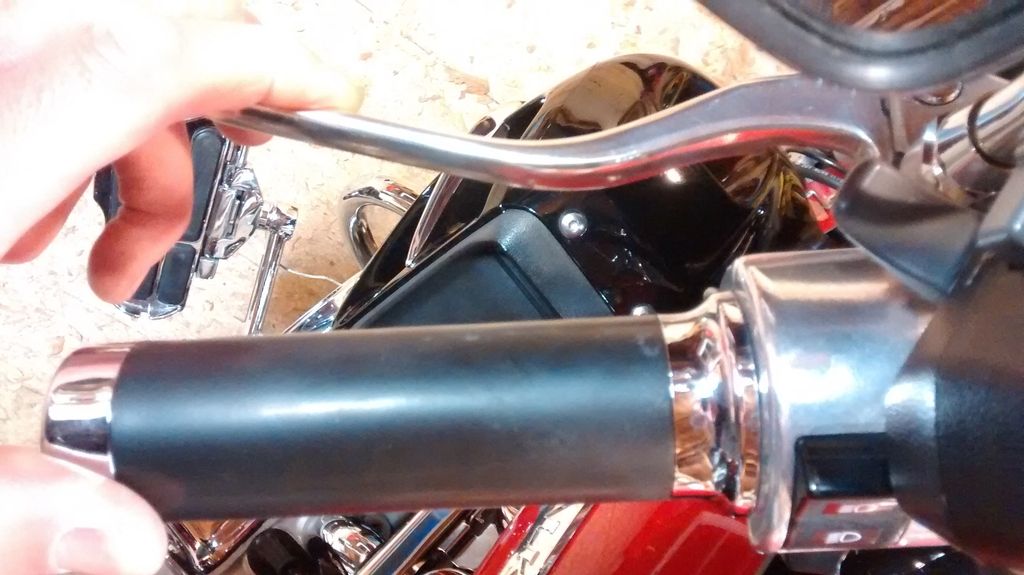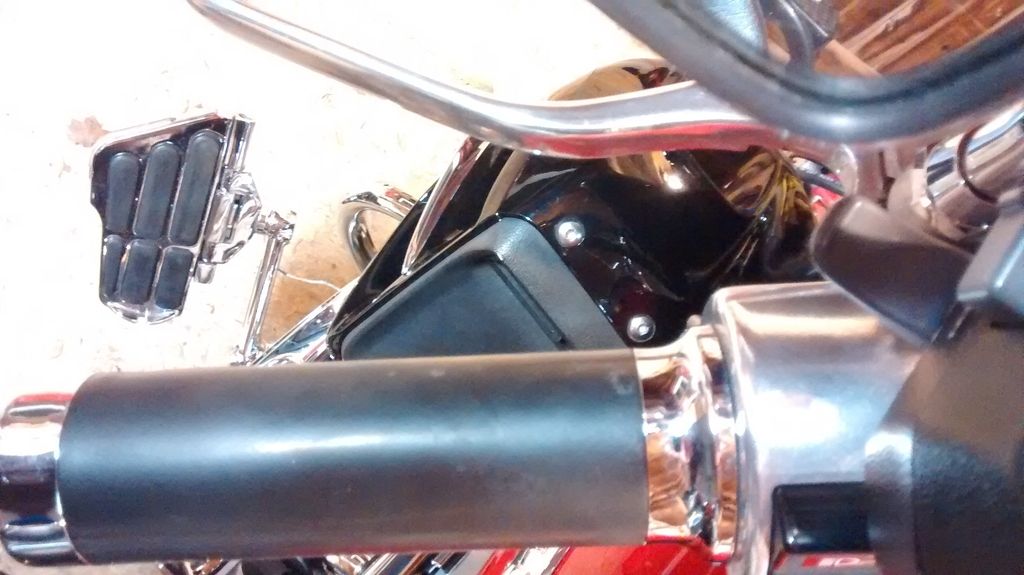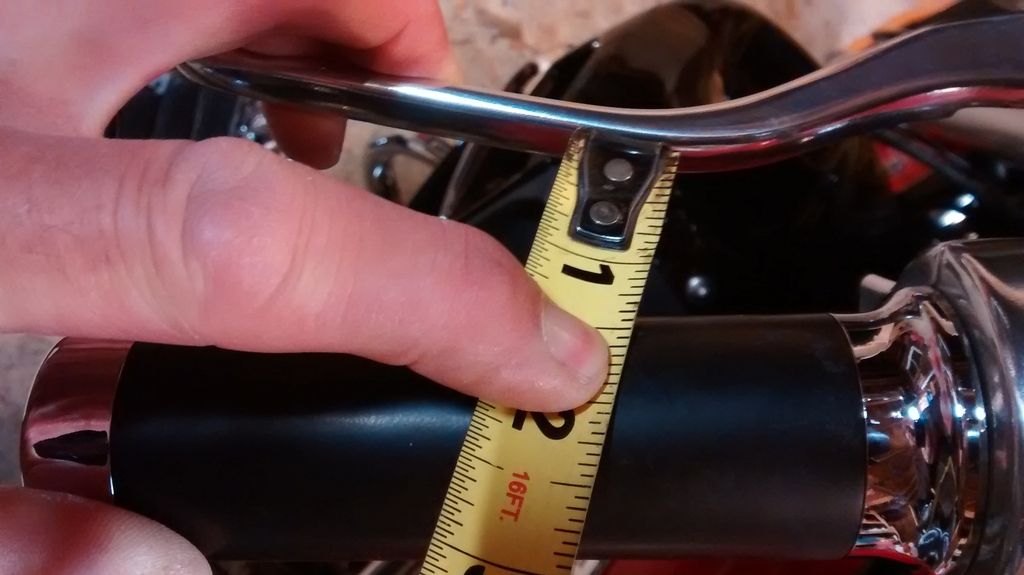|
cogsman
|
 |
« on: May 28, 2015, 03:45:26 PM » |
|
I bled my clutch a couple of weeks ago, and yesterday it felt as if the friction zone was way out near the end of the lever travel.
I could just be imagining it. What is the relationship between clutch fluid and the friction zone? Are there any warning signs I should be looking for? I'd hate to be riding and then all of a sudden I can't engage the clutch...
|
|
|
|
|
 Logged
Logged
|
|
|
|
|
sandy
|
 |
« Reply #1 on: May 28, 2015, 06:20:53 PM » |
|
Sounds like air got back in. Rebleed the system and try it again.
|
|
|
|
|
 Logged
Logged
|
|
|
|
|
ValkISDan
|
 |
« Reply #2 on: May 29, 2015, 05:11:54 AM » |
|
I agree with Sandy. If you recently installed aftermarket clutch and brake levers that can do it too, it happened to me.
|
|
|
|
|
 Logged
Logged
|
|
|
|
|
DK
|
 |
« Reply #3 on: May 29, 2015, 06:30:15 AM » |
|
Fasten the clutch lever against the handlebar with a zip-tie & open the master cylinder reservoir. Leave it this way overnight or longer.
Light tapping on the banjo bolt can also help.
Dan
|
|
|
|
|
 Logged
Logged
|
Machinery has a mysterious soul and a mind of its own.
|
|
|
|
cogsman
|
 |
« Reply #4 on: May 29, 2015, 07:29:28 AM » |
|
Dan, open the MC right up and leave it exposed or just loosen it?
|
|
|
|
|
 Logged
Logged
|
|
|
|
Patrick
Member
    
Posts: 15433
VRCC 4474
Largo Florida
|
 |
« Reply #5 on: May 29, 2015, 08:49:48 AM » |
|
Where was the ' friction zone ' before ? These monsters have very little free-play. The clutch engages/disengages almost fully out.
Re-bleeding can't hurt. Fluid level has nothing to do with amount of free-play as long as there is fluid in the reservoir.
|
|
|
|
|
 Logged
Logged
|
|
|
|
|
cogsman
|
 |
« Reply #6 on: May 29, 2015, 05:12:55 PM » |
|
That's the thing Patrick I'm not 100% sure. It just seems like my fingers are in the wrong spot when the clutch starts to bite. Further than usual. And it does seem harder to find neutral.
|
|
|
|
|
 Logged
Logged
|
|
|
|
KY,Dave (AKA Misunderstood)
Member
    
Posts: 4146
Specimen #30838 DS #0233
Williamsburg, KY
|
 |
« Reply #7 on: May 30, 2015, 03:45:39 AM » |
|
My bet is you had air in the line and after you bleeding the clutch you now have it grabbing where it should. Rebleeding can't hurt, but if you had air it I believe it would grab later rather then sooner. Just my guess.
|
|
|
|
|
 Logged
Logged
|
|
|
|
|
DK
|
 |
« Reply #8 on: May 30, 2015, 06:35:57 AM » |
|
I removed the bladder overnight when I did mine.
I later purchased a set of Speed Bleeders & replaced the fluid as I'm sure it picked up a lot of moisture being left open like that.
Speed Bleeders is one of the biggest bargains out there. Easy to install, cheap, & serve a useful purpose.
Dan
|
|
|
|
|
 Logged
Logged
|
Machinery has a mysterious soul and a mind of its own.
|
|
|
|
davit
|
 |
« Reply #9 on: May 30, 2015, 07:59:17 AM » |
|
My bet is you had air in the line and after you bleeding the clutch you now have it grabbing where it should. Rebleeding can't hurt, but if you had air it I believe it would grab later rather then sooner. Just my guess.
I second that. My clutch is engaging about 2/3's of the way out; I'm going to bleed it at the banjo bolt this afternoon because I think there is air in it. If it's like my GL1200 the bleeding will restore the engagement point ("friction zone") to where the lever is nearly fully released. |
|
|
|
|
 Logged
Logged
|
|
|
|
|
cogsman
|
 |
« Reply #10 on: May 30, 2015, 09:36:03 AM » |
|
So you're saying that the friction zone should be way out? Interesting... stupid question but then what is the point of so much travel if it only engages when your fingers are practically extended all the way?
|
|
|
|
|
 Logged
Logged
|
|
|
|
wiggydotcom
Member
    
Posts: 3387
Do Your Best and Miss the Rest!
Yorkville, Illinois
|
 |
« Reply #11 on: May 30, 2015, 08:35:44 PM » |
|
Hopefully this isn't the case but if your clutch engages almost all the way out, your clutch could be going out. Mine exhibited this symptom. Here's a test that might confirm it. If you have slippage in any gear when you give the throttle a good hard turn(like if you were going to pass a car), that's not good. It turned out my damper plate was shot. If you have no slippage, then your engage point is probably ok-or as others have said, you could have air still in you lines.
|
|
|
|
|
 Logged
Logged
|
VRCC #10177 VRCCDS #239  |
|
|
|
cogsman
|
 |
« Reply #12 on: May 30, 2015, 09:00:52 PM » |
|
No slippage but I'm confused...
Is it normal or abnormal for the friction zone to be way out? I'm reading through these posts and some say air in the lines and others say normal. I truly appreciate the assistance, don't get wrong, but which is it?
|
|
|
|
|
 Logged
Logged
|
|
|
|
|
Ricky-D
|
 |
« Reply #13 on: May 31, 2015, 08:38:48 AM » |
|
No slippage but I'm confused...
Is it normal or abnormal for the friction zone to be way out? I'm reading through these posts and some say air in the lines and others say normal. I truly appreciate the assistance, don't get wrong, but which is it?
I'll end your confusion. The reason for the engagement being so far out on the release of the clutch lever is to insure a maximum disengagement of the clutch and clutch plates when you pull the lever towards the handlebar. This necessarily allows for smoother shifting and less possible wear and tear on the transmission and the drive line. *** |
|
|
|
|
 Logged
Logged
|
2000_Valkyrie_Interstate
|
|
|
|
DK
|
 |
« Reply #14 on: June 01, 2015, 06:30:18 AM » |
|
Is the clutch completely disengaging?
If not, it may be that air in the line is limiting clutch travel thus neccesetating engagement / disengagement occurring at the extreme travel of the hand lever. Air in the causes the same behavior as steam in the overheated system with wet fluid; you press the pedal but the servo mechanism doesn't servo. I acknowledge that there is a logic argument in favor of the exact opposite, but air in the system disregards logic.
This was my experience recently when I left the handlebars tilted downward overnight while installing a new 6" riser and the hydrolic fluids leaked out, fortunately missing the paint.
Re-bleeding with my new speed bleeder coupled with zip tieng the lever & banging on the banjo bolt restored normal clutch travel and behavior.
There seems to be something about the design of the banjo bolt that captures air. It's a PAIA on British sports cars.
Dan
|
|
|
|
|
 Logged
Logged
|
Machinery has a mysterious soul and a mind of its own.
|
|
|
Patrick
Member
    
Posts: 15433
VRCC 4474
Largo Florida
|
 |
« Reply #15 on: June 01, 2015, 07:31:33 AM » |
|
No slippage but I'm confused...
Is it normal or abnormal for the friction zone to be way out? I'm reading through these posts and some say air in the lines and others say normal. I truly appreciate the assistance, don't get wrong, but which is it?
I think its been said these have very little free-play and the engagement/disengagement is near the end of travel. That said, there should still be a bit of free-play. The lever bushing could also be worn too much, but, I didn't think that was the issue from your post. |
|
|
|
|
 Logged
Logged
|
|
|
|
|
sdv003
|
 |
« Reply #16 on: June 01, 2015, 05:47:30 PM » |
|
you might try putting the top on the reservoir, loosening the clutch lever from the handlebar and holding the assembly so that air trapped in the banjo bolt would travel to the reservoir. Lightly tapping the bolt with a rubber mallet might speed the process. That was where I had air trapped when I bled the clutch line.
|
|
|
|
|
 Logged
Logged
|
|
|
|
|
davit
|
 |
« Reply #17 on: June 01, 2015, 07:43:18 PM » |
|
I stopped by Harbor Freight and picked up their vacuum bleeder today, bled 12 ounces of DOT 4 through my relatively new to me Valk's clutch and got rid of the nasty crud. Anyway, after buttoning it up the clutch engaged about 1/2" from the grip. I knew that wasn't right so I hooked up the bleeder again and ran another 6 ounces through. The result was about the same so I took it for a nice long ride to bike night, about a half an hour each way on country roads. Now it feels perfect: only nice crisp shifts. This is at the point of engagement of the friction zone:  Clutch lever all the way out:  About 1-3/8" from the grip.  Hope it helps. |
|
|
|
|
 Logged
Logged
|
|
|
|
|
davit
|
 |
« Reply #18 on: June 01, 2015, 07:58:03 PM » |
|
If you have small hands, I've heard of people bending the levers to suit them. A block of wood as close as practical to the pivot point, an appropriately sized piece of PVC pipe slipped over the end of the lever and bend away. Think it through be careful Valkyrie parts are hard to come by...
|
|
|
|
|
 Logged
Logged
|
|
|
|
|
Farther
|
 |
« Reply #19 on: June 02, 2015, 10:17:45 AM » |
|
Bending the lever seems like a very bad idea to me. Cast aluminum is not very malleable.
|
|
|
|
|
 Logged
Logged
|
Thanks,
~Farther
|
|
|
|
Ramie
|
 |
« Reply #20 on: June 14, 2015, 03:27:06 PM » |
|
|
|
|
|
|
 Logged
Logged
|
“I am not a courageous person by nature. I have simply discovered that, at certain key moments in this life, you must find courage in yourself, in order to move forward and live. It is like a muscle and it must be exercised, first a little, and then more and more. A deep breath and a leap.”
|
|
|
|
Ricky-D
|
 |
« Reply #21 on: June 15, 2015, 06:28:52 AM » |
|
Regardless of the reasons, you should realize that doing anything with the clutch lever
that results in a lesser amount of movement of the lever, such as having the lever closer
to the handlebars will result in problems which will be clutch related. problems such as: difficulty
in shifting, problem finding neutral, creeping while at stopped, accelerated clutch wear, clutch
chatter, increased engine heat, and any other problems related to a clutch that does not fully
disengage. Which is what shortening the lever throw will cause.
***
|
|
|
|
|
 Logged
Logged
|
2000_Valkyrie_Interstate
|
|
|
|
allanbegg
|
 |
« Reply #22 on: June 16, 2015, 07:16:53 PM » |
|
I just bought and installed those on my "new to me" I/S. Super easy to install and work fine, with one exception. I found out that I need to adjust the switches under both the brake and clutch levers, as I can not start the bike while in gear now, with the clutch engaged. Apparently, the bike doesn't know that I have the clutch lever pulled in. Hopefully, I can adjust the switch enough to get it to work. Otherwise, the only thing those levers do, is make it easier for smaller hands to grab the lever and pull. The relative position of clutch (and brake) engagement changed, but that was to be expected. Allan |
|
|
|
|
 Logged
Logged
|
VRCC # 36795
|
|
|
|
cogsman
|
 |
« Reply #23 on: June 21, 2015, 07:03:07 AM » |
|
I've bled the clutch again. Paid very very close attention and I can verify it was done properly this time. No appreciable difference in what vice described above so, I'll accept the current action as normal and ride! Thanks to all for your help.
|
|
|
|
|
 Logged
Logged
|
|
|
|
|

